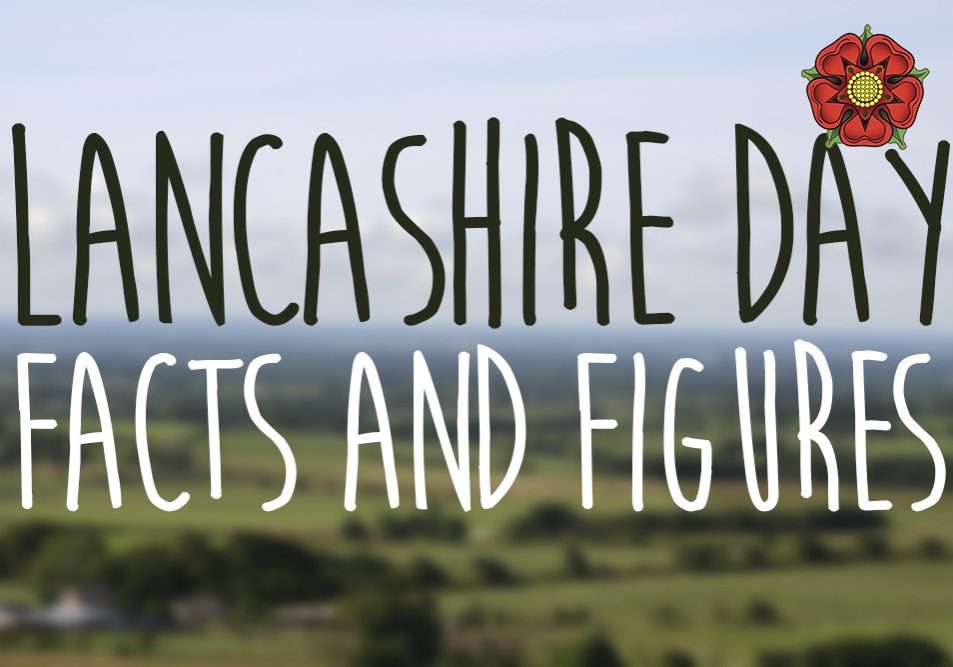
Lancashire Day Facts
by Northern Life
The 27th November marks Lancashire Day, remembering the day in 1295 when Lancashire sent its first representatives to Parliament by King Edward I of England to attend what later became known as The Model Parliament. Curated by the Friends of Real Lancashire, it was first observed in 1996 with the loyal toast to “The Queen, Duke of Lancaster”.
To celebrate Lancashire’s rich heritage, we have collected some interesting facts about our County:
- Lancashire was established in 1183
- It has a population of 1,460,893
- The county covers an area of 3,075 sq km – making it one of the largest shire counties
- Dunsop Bridge in the Ribble Valley is the centre of the British Isles
- 80 per cent of Lancashire officially classed as rural
- The mill towns of Blackburn and Burnley were the birthplace of the Industrial Revolution in the 18th century
- With a population of 260,000, Bolton is the largest town in Britain
- Bashall Town, near Clitheroe, is England’s smallest town
- The highest point in the county is Gragareth at 627 metres high or 2057 feet, making it a mountain. It is near Whernside, one of Yorkshire’s `Three Peaks`
- You can see Blackburn and Burnley from the famous Pendle Hill. Pendle Hill is only 165ft shy of also being called a mountain
- Preston is one of England’s newest Cities and in 2012 it celebrated the Preston Guild, which only happens every 20 years and is England’s oldest festival
- Britain’s shortest river is the Brun which runs through Burnley
- The Lancaster Canal has the longest lock-free stretch of man-made waterway in the country
- The largely `undiscovered` Forest of Bowland Area of Outstanding Beauty covers 802 square km – making it the same size as New York City
- And the Forest of Bowland is the first protected area in England to be awarded the European Charter for Sustainable Tourism in Protected Areas, joining just 30 other protected areas across Europe
- The UK canal system was started in 1759 with the Worsley to Manchester, Bridgewater Canal
- The Leeds Liverpool Canal, Britain’s longest, flows through large parts of the county
- The first passenger railway opened in Lancashire in 1830 between Manchester and Liverpool
- Preston is home to Europe’s largest bus station
Famous Lancashire
- George Booth (George Formby) was born in Wigan in 1904
- Jimmy Clitheroe (actual name) was born in Clitheroe in 1921
- Eric John Bartholomew (Eric Morcambe) was born in Morcambe in 1926
- In 1617, the legend is that King James I stayed with Sir Richard de Hoghton at his Tudor mansion in central Lancashire. He was so very impressed by the hospitality, especially with the loin of beef that he was served, he took out his sword and knighted the joint with the words ‘I knight thee, Sir Loin’ hence the modern name of sirloin steak. The huge table on which the loin of beef stood can still be seen at Hoghton Tower.
- Stonyhurst College and the surrounding Ribble Valley is said to be the inspiration for Tolkien’s Middle-earth from `Lord of the Rings` – his son boarded at the college which he visited regularly
- Pendle Hill is where George Fox is believed to have had his vision in 1640 prior to founding the Quaker Movement
- The trial of the Pendle Witches in Lancaster in 1612 is the UK’s most famous witchhunt and in 2012 Lancashire marked its 400th Centenary
- Squires Gate, now known as Blackpool International Airport, was the UK’s first airport
- Blackpool’s permanent electric street tramway was the world’s first when it opened in 1885
- Martin Mere, Lancashire’s largest lake, is said to be the last known home of King Arthur’s sword `Excalibur`
- Roger Bannister, the first person to break the four minute mile, lived at what is now Pendle Heritage Centre in Barrowford
- Sirloin beef is said to get its name after a visit by James 1 to Hoghton Tower near Preston, where he enjoyed a piece of beef so much – that he knighted it
